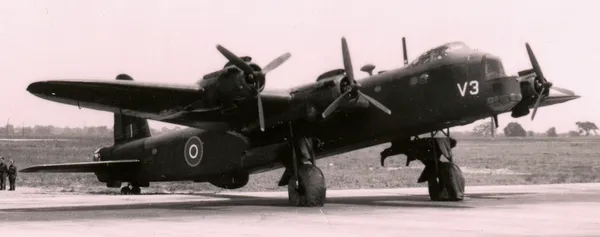Sergeant Pittard is believed to have baled when the second order to abandon was given but was killed in action
Pittard, Ronald William (Sergeant)
Killed in Action 1943-May-26


Birth Date: 1921
Born:
Parents: Son of Archibald George and Ethel Pittard, of Homerton, London
Spouse:
Home: Homerton, London
Enlistment:
Enlistment Date: unkown date
Service
RAFVR
Unit
15 (B) Sqn- Squadron (RAF)
Aim Sure
Base
RAF Mildenhall
Rank
Sergeant
Position
Flight Engineer
Service Numbers
1387554
Home
Target
Temporary Burial
Remains were later exhumed from this location and reburied
Crew or Other Personnel
Stirling BK611
Mission
Stirling Mk. l BK611
Bombing 1943-May-25 to 1943-May-26
15 (B) Sqn (RAF) RAF Mildenhall
15 Squadron (Aim Sure) RAF Mildenhall. Short Stirling I aircraft BK 611 LS-U nicknamed "Te-Kooti" was struck by flak during the run-in to bomb targets in Dusseldorf, Germany and jettisoned their bomb-load. Control of the aircraft was regained and turned for home but the Stirling crash-landed west of the River Maas near Venlo, Holland with the loss of three aircrew members
FS JO Wilson (RAAF), Sergeant RW Pittard (RAFVR) and Sergeant P Arnott (RAFVR) were killed in action
Sergeant EF Seabolt (RCAF) baled after the flak hit, survived and was taken as Prisoner of War
Flight Lieutenant BE Cooper (RAF), Sergeant SJ Maxted (RAF) and Sergeant AW Edgley (RAF) survived and evaded for a time but all were eventually arrested and became Prisoners of War
Stirling serial: BK611

In June 1944, this Short S.29 Stirling B Mk. IV (Serial No. LK589), coded V3, RAF, was flown across the Atlantic as part of a navigation training exercise and did a tour of bases in Eastern Canada. It is shown here at Malton, Ontario. It was flown back to the UK after a two-week visit.
The Short Stirling was a British four-engined heavy bomber of the Second World War. It has the distinction of being the first four-engined bomber to be introduced into service with the Royal Air Force (RAF).
The Stirling was designed during the late 1930s by Short Brothers to conform with the requirements laid out in Air Ministry Specification B.12/36. Prior to this, the RAF had been primarily interested in developing increasingly capable twin-engined bombers but had been persuaded to investigate a prospective four-engined bomber as a result of promising foreign developments in the field. Out of the submissions made to the specification Supermarine proposed the Type 317, which was viewed as the favourite, whereas Short's submission, named the S.29, was selected as an alternative. When the preferred Type 317 had to be abandoned, the S.29, which later received the name Stirling, proceeded to production. In early 1941 the Stirling entered squadron service. During its use as a bomber pilots praised the type for its ability to out-turn enemy night fighters and its favourable handling characteristics whereas the altitude ceiling was often a subject of criticism. The Stirling had a relatively brief operational career as a bomber before being relegated to second line duties from late 1943. This was due to the increasing availability of the more capable Handley Page Halifax and Avro Lancaster, which took over the strategic bombing of Germany. Decisions by the Air Ministry on certain performance requirements (most significantly to restrict the wingspan of the aircraft to 100 feet) had played a role in limiting the Stirling's performance; the 100ft limit also affected earlier models of the Halifax (MkI & MkII) though the Lancaster never adhered to it.
During its later service, the Stirling was used for mining German ports; new and converted aircraft also flew as glider tugs and supply aircraft during the Allied invasion of Europe during 1944"“1945. In the aftermath of the Second World War, the type was rapidly withdrawn from RAF service, having been replaced in the transport role by the Avro York, a derivative of the Lancaster that had previously displaced it from the bomber role. A handful of ex-military Stirlings were rebuilt for the civil market. Wikipedia

